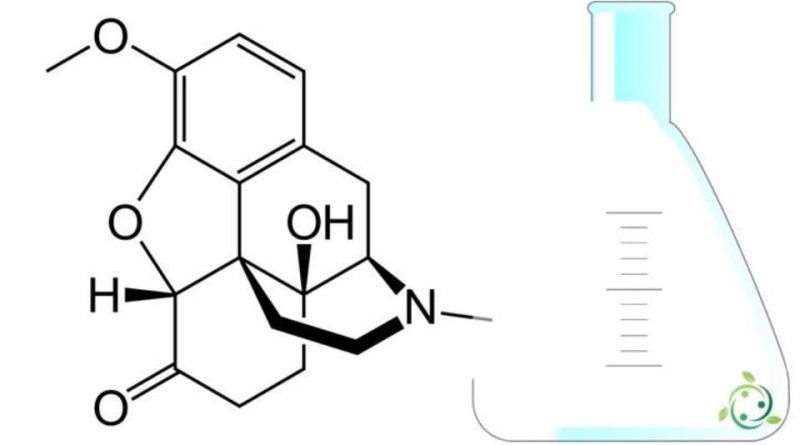Oxycodone
Oxycodone
Oxycodone, whose term in the official IUPAC nomenclature is: (5R, 9R, 13S, 14S) -4,5α-epoxy-14-hydroxy-3-methoxy-17-epoxy-methylmorfinan-6-one, is an alkaloid .
Oxycodone has a brute or molecular formula: C18H21NO4 and is a pure agonist opioid, belonging to the phenanthrene group and synthesized from thebaine. Oxycodone has similar potency to morphine, and produces a metabolite called oxymorphone (15%) with 2 to 3 times potency than morphine.
Oxycodone was first synthesized in Germany in 1916 and used clinically in 1917 and marketed in the United States in 1939.
The discovery of this molecule was born from the need to find a less dangerous solution than heroin, therefore it is part of the new semi-synthetic opioids studied to improve those already existing at the time: morphine, diacetylmorphine (heroin) and codeine.
Oxycodone is therefore a drug belonging to the class of opioid painkillers and is of semi-synthetic origin, which derives from thebaine, a natural alkaloid that is extracted from the opium poppy.
Oxycodone possesses an analgesic power similar to that of morphine and has a plasma half-life of approximately four hours. For this reason frequent administrations are necessary (every 4-6 hours). To overcome this problem, oxycodone is being made available in the form of extended-release capsules or tablets.
Medicines for oral use that contain oxycodone are generally dispensable only on presentation of a non-repeatable medical prescription. Some of these medicines, being classified as class A drugs, can be dispensed at the expense of the National Health System (NHS).
In fact, oxycodone is also available medically for parenteral use.
The use of oxycodone is indicated for the treatment of painful states of moderate to severe intensity.
Low dosages are used for symptomatic therapy of diarrhea. It can be formulated as the sole active ingredient or in combination with other drugs. Like all other opioids, oxycodone can induce tolerance and addiction.
From the point of view of its mechanism of action, oxycodone is a highly selective, semi-synthetic opioid agonist for the μ-opioid receptor (MOR). This receptor is the major biological target of the endogenous opioid neuropeptide β-endorphin.
Oxycodone has low affinity for the δ-opioid receptor (DOR) and for the κ-opioid receptor (KOR), for which it is an agonist.
After oxycodone binds to MOR, a G protein is released, which inhibits the release of cellular neurotransmitters and decreases cAMP production by closing calcium channels and opening potassium channels.
Opioids such as oxycodone are thought to produce their analgesic effects by activating MOR in the periaqueductal midbrain and ventromedial rostral medulla (RVM). Dependence is caused by activation of the mesolimbic reward pathway, including the ventral tegmental area, nucleus accumbens, and pale ventral nucleus.
Oxycodone can cause several types of side effects, although not all patients experience them. This depends on each person’s sensitivity to the drug. Therefore, it is not certain that the adverse effects occur all and with the same intensity in each individual.
Warning: The information shown is not medical advice and may not be accurate. The contents are for illustrative purposes only and do not replace medical advice.

